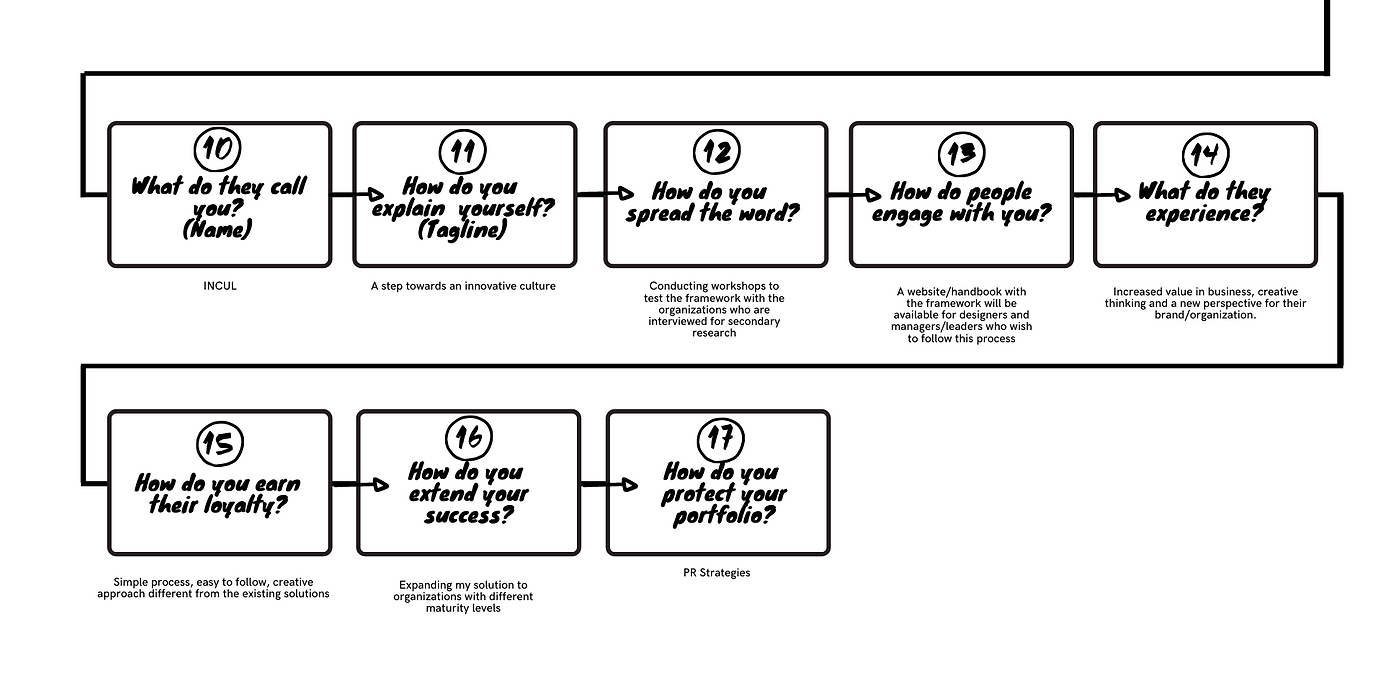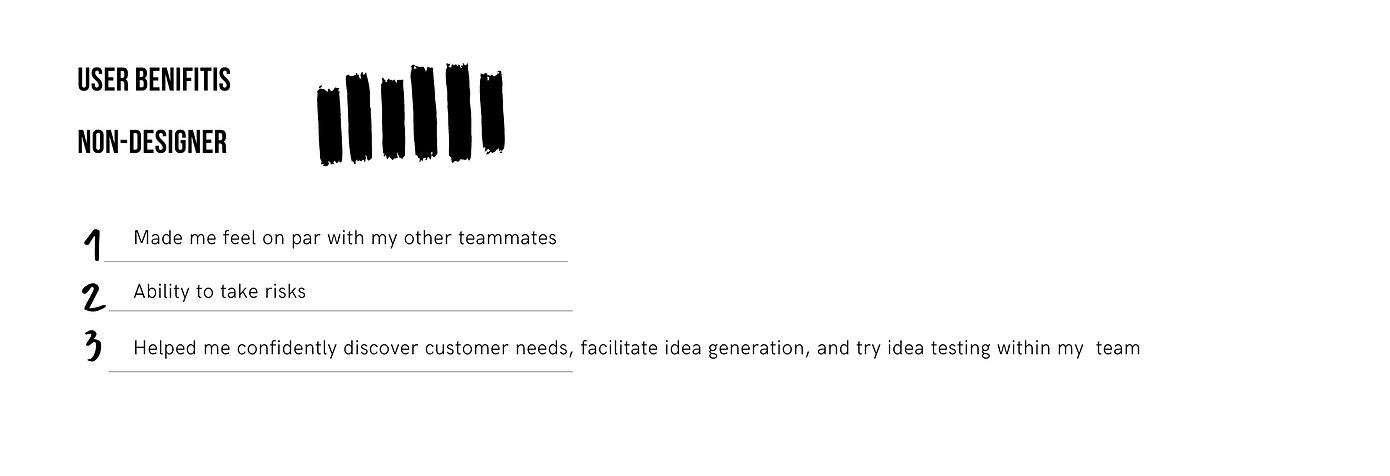
INCUL
Incul is a web-based learning management system that is a creative and experimental system for designers facilitators and design thinkers of companies, who want to achieve maximum design benefits and use design as a business strategy and build a culture of innovation in their business. We do this by creating a canvas that is easy to use, customizable, has empathy, and is also a learning platform for organizations.
The problem
In design companies where design is an integrated element in the development process, there are barriers that are restricting them from achieving full benefits. The process followed by these companies is lacking in the practice of experimentation, user research, and design strategy. These companies have 10% less product usability and 13% less customer satisfaction. The barriers developed are keeping the companies from having design as a key strategy in their business model. The research found out that there is no other topic that is so universally recognized as important but at the same time difficult to implement.
Scope and constraints
Context: In an environment where the importance of creativity and innovation in business is increasing this project is an attempt to create a framework
that will help optimize creativity in organizations.
Content:
User-Centered Research - Expert/User/Extreme/User Interviews, studying existing research, Market Research
Synthesis and analysis Tools - Project positioning, Market research, Research questions (Umbrella and sub-questions), Personas, Journey maps, empathy maps
Ideation Tools – Storytelling, Concept workshop, creative matrix, ZAG, Lean Canvas.
Prototype - Branding, Sketches, Wireframe, Concept of Gamification
Subjects: Organizations with level 3 design maturity (As per the report of the new design frontier by invision)
Location: States
Timeline: 10 weeks
Limitations: There are so many reports and studies in the same area of study the solution will have to be unique and effective and not influenced by the existing solutions.
Roles and responsibilities
As this was my theses project, I was responsible for all aspects of the project from research, testing to development.
Application
It can be used by any company that wants to achieve maximum design benefits and use design as a business strategy by building a culture of innovation a. It benefits project managers who are trying to use the framework of innovation outline and find it hard to address and manage as a single problem solver leading the project. It can also be used by Non-designers for leveling the playing field when it comes to design thinking. It is a canvas that is easy to use, customizable, has empathy, and is also a learning platform for the organizations
Research methodology
The research was conducted using mixed methods using quantitative and qualitative research for secondary data collection to understand creativity in business. The primary data was collected through an in-depth interview method where the why and how of decision-making were explored and not just the what, where, and when. The qualitative research was produced by studying the designers, directors, and managers of the organizations to understand the first-hand opportunity or challenges that are barriers to creativity in business. I began to look into the companies that have already made it to the top and tried to understand what they are doing differently. To find a solution that is not just another framework like design sprints or IDEO’s design thinking but to make the companies follow and get comfortable with these existing processes it was important to look into specific problems that these companies had overcome to reach their maximum potential. The research method chosen focused on describing the individual’s experiences and beliefs. I asked open-ended questions. The one-on-one interviews gave me an insight into all of the participant’s individual careers, and how the different companies that they worked for operated, what worked well for the companies and what did not. How they defined creativity in business, which were the companies that were doing well in creativity according to them, and why were these companies more successful in creating a culture of innovation.
The Product
What is Incul?
Incul is a web-based learning management system.
How does it work?
The Incul canvas is divided into 3 stages
The first one is 'enter' the second one is 'evaluate' and the third is 'iterate'.
The first step in the enter phase is carried out by the design facilitator.
The screens of the website are shared below






STEP 1: ENTER

STEP 2: EVALUATE

STEP 3: ITERATE
Enter (design facilitator)
-
Create your profile
-
Add team members to INCUL
-
Set up the Project brief
-
Set up timelines for each phase and meetings
-
Invite and syn the calendar timeline with members




Enter (Design thinker)
-
Create your profile
-
Add team members to INCUL
-
Synchronize the calendar for timelines
-
Answer the questions in each phase as per the timeline (only the team leader from each team can enter and edit answers)
-
Attend the meeting in each phase to review the answers




Evaluate (Design thinker + Design facilitator)
-
As and when the data is entered will be converted into a live diamond which can be viewed by all the people on the team.
-
The design facilitator can add comments on the answers through the project board.
-
The teams get to see their comments and discuss those in the meetings conducted after each phase by the design facilitator to clear doubts and keep everyone on the same page.




Iterate (Design thinker + Design facilitator)
In the Iterate phase
the above process gets repeated in each phase.
As per the image shown below, each project is different and each diamond will be different.
If the company keeps using INCUL for different projects it will spark innovation in the teams and everyone will get comfortable with the recipe of design thinking.


The Process
Discover
In the discovery phase, the nature of the problem was defined using the design frontiers invision report which mapped the opportunity space which leads to a clear understanding of the problem and the target group. The umbrella questions and sub-questions helped form the research matrix which was used as a qualitative tool to map the research outputs, The competitor’s analysis and the porters 5 forces pointed out that there are a lot of existing frameworks and this aided in identifying the competitive rivalry with each of the existing frameworks.
The qualitative research was produced by studying the designers, directors, and managers of the organizations to understand the first-hand opportunity or challenges that are barriers to creativity in business. I began to look into the companies that have already made it to the top and tried to understand what they are doing differently. The participants in my secondary research zoom interviews included the Strategy Director, global alliance manager, interactive and visual designers, creative directors, and experts from the field of design, innovation, and customer experience fields. A variety of companies were included by the way of the participants from the industries like google, amazon, D-ford, IBM, and HP.



umbrella questions and sub-questions
.png)






The participants in my secondary research zoom interviews included the Strategy Director, global alliance manager, interactive and visual designers, creative directors, and experts from the field of design, innovation, and customer experience fields. A variety of companies were included by the way of the participants from the industries like google, amazon, D-ford, IBM, and HP.
Define
It roughly took 12-15 hours to transcribe the recordings of the in-depth interviews with the participants which generate around 280 -300 data points. The data points were then grouped into similar themes converting the yellow stickies to blue-green-pink. After summarising the groupings the most popular theme that came up was to create value for business a company has to have design embedded in its culture. This lead to reframing the HMW question. Through the interviews, personas and empathy maps were generated which later helped with the decision making and created an understanding of the user that I was designing the solution for.












Develop
From the insights generated from secondary research, I used a creative matrix to generate new ideas I did this in group with included a few people to get different perspectives on the solution. I used ZAG to zoom out and think of the solution holistically. I wanted to create something which is interactive that can be used as a first step to create a culture of innovation in companies where design is an integrated process. After coming up with 3 concepts I conducted a workshop to test which one is the best option and decide on what features to add or edit in the final prototype.


.png)




Deliver
I decided to gamify the experience and balance it in a way that it is not a mundane process for the users. I started prototyping the solution and kept modifying it from the feedback from the experts and participants. The result of which was Incul(In-Innovative, cul-Culture) a web-based learning management system that is creative and experimental
_Page_2_edited.jpg)
_Page_1_edited_edited.jpg)




.png)
Key features
INCUL not only visualises the information but also creates interactions between the teams where they can collaborate and conduct activities like brainstorming, mind mapping, etc.
Along with the interactive feature the INCUL also creates empathy with its users if a person has entered that they are feeling stuck or confused in the feelings section they can either book a meeting with the design facilitator or educte themselves with the links provided on the INCUL website.







